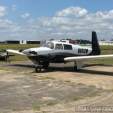With or Without Flaps?
-
Members Online
- Jay3190
- Jake@BevanAviation
- DonMuncy
- OR75
- Jim Peace
- donkaye
- Hector
- blackdogair
- ta2too
- tim417
- kowabunga
- PaulM
- redbaron1982
- Parker_Woodruff
- SOLER
- natdm
- Trogdor
- TCC
- mike_elliott
- Hank
- Bike_rider
- DCarlton
- 802flyer
- UteM20F
- Glen Davis
- richardbrochu27
- midlifeflyer
- TheAv8r
- ragedracer1977
- Greg Ellis
- bluehighwayflyer
- Pierre07
- William A
- jtoland
- LANCECASPER
- clh
- Shadrach
- Bartman
- PT20J
- Utah20Gflyer


Recommended Posts
Join the conversation
You can post now and register later. If you have an account, sign in now to post with your account.